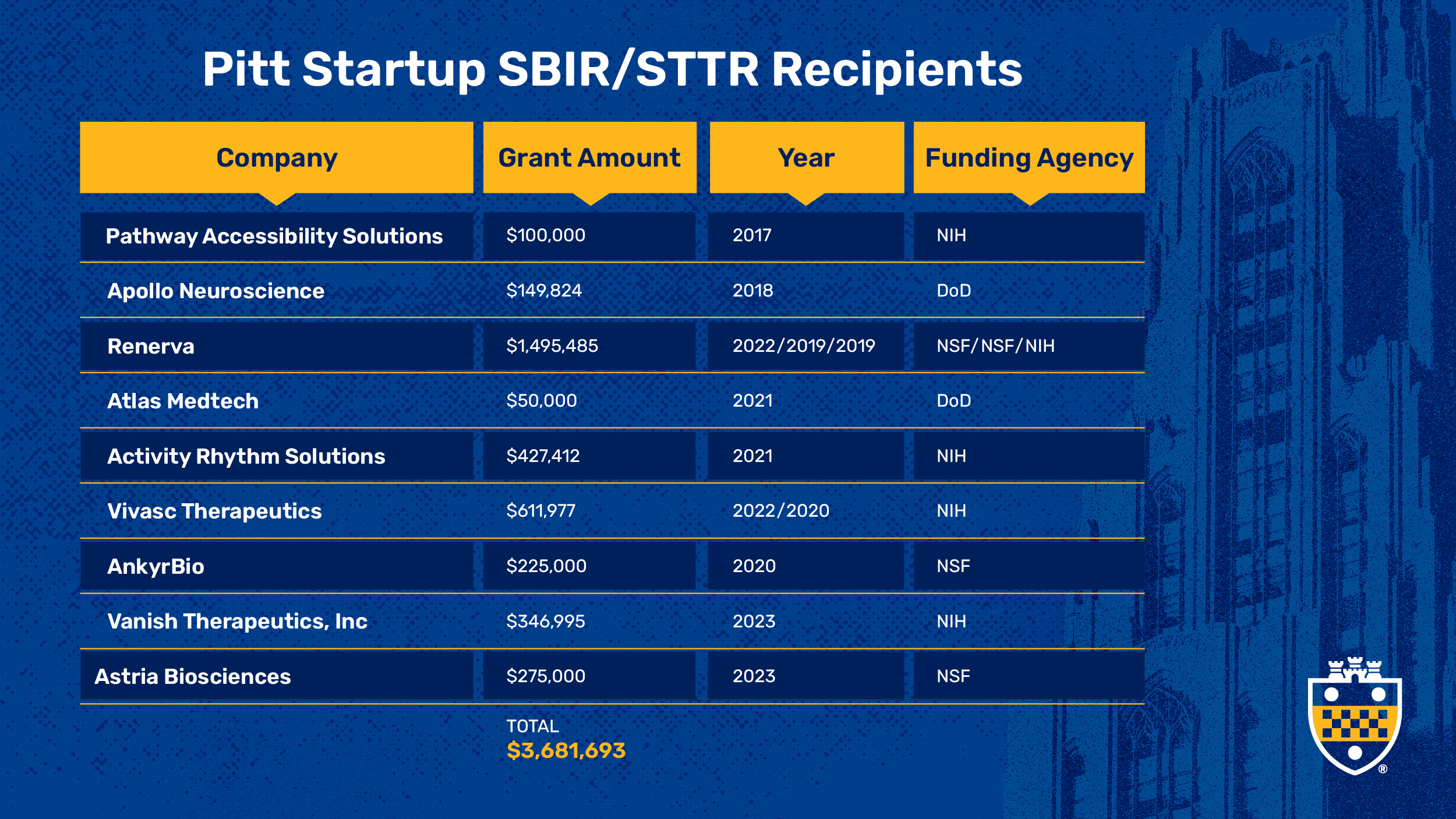When a startup launches from a university there often remains a level of risk that potential investors are not ready to take on. That’s where a SBIR (Small Business Innovation Research) or STTR (Small Business Technology Transfer) grant can fill the void to keep an innovation from withering in the "Valley of Death".
SBIR and STTR are competitive programs offered by several federal agencies such as the National Institutes of Health (NIH), National Science Foundation (NSF), Department of Defense (DoD), and others. These programs aim to encourage startups to engage in commercialization efforts.
Since 2017, startups emerging from Pitt have received SBIR/STTR grants valued at nearly $3.7 million, including Apollo Neuroscience, which is successfully marketing its wearable device for managing stress and improving sleep, and, most recently, Astria Biosciences, which is developing a whole blood test to diagnose and monitor the progress of cerebral aneurysms.
SBIR grants consist of three phases:
- Phase I: Feasibility study to determine the scientific, technical, and commercial potential of the proposed technology.
- Phase II: Full-scale R&D effort to further develop and commercialize the technology.
- Phase III: Commercialization of the technology with non-SBIR funds.
STTR grants are similar to SBIR but requires collaboration between the startup and a research institution, such as a university or federal laboratory.
Paul Petrovich, assistant director of business development at the Innovation Institute, part of the Office of Innovation and Entrepreneurship, has been assisting Pitt startups in securing SBIR and STTR grants for more than 20 years. He said the application process for these grants is rigorous with first time Phase I proposal success rates in the range of 15-20 percent. Successful applicants, however, achieve many significant benefits, including:
- Phase I and Phase II funding amounts up to $1.5M to validate and further develop prototypes or beta versions of their products and services.
- Successful participation in SBIR/STTR can lead to opportunities to secure federal contracts.
- Some agencies offer technical assistance and mentoring to help small businesses navigate the R&D process and commercialization efforts.
- The funding is non-dilutive, meaning the company or its subsequent investors don’t have to pay it back and there are no royalties attached.
- Successful participation in SBIR/STTR builds credibility for follow-on private investment. It signifies that the technology has been validated and has gone through a layer of technical de-risking.
The NSF offers regular information sessions on preparing an SBIR/STTR application. The next workshop is on April 25, 2024, 2-3 p.m. Register for this session. You can also view a past seminar on the SBIR/STTR programs hosted by the Innovation Institute.
For additional consultation on strategies for applying for SBIR grants, contact the Innovation Institute at OIEhelp@pitt.edu.
